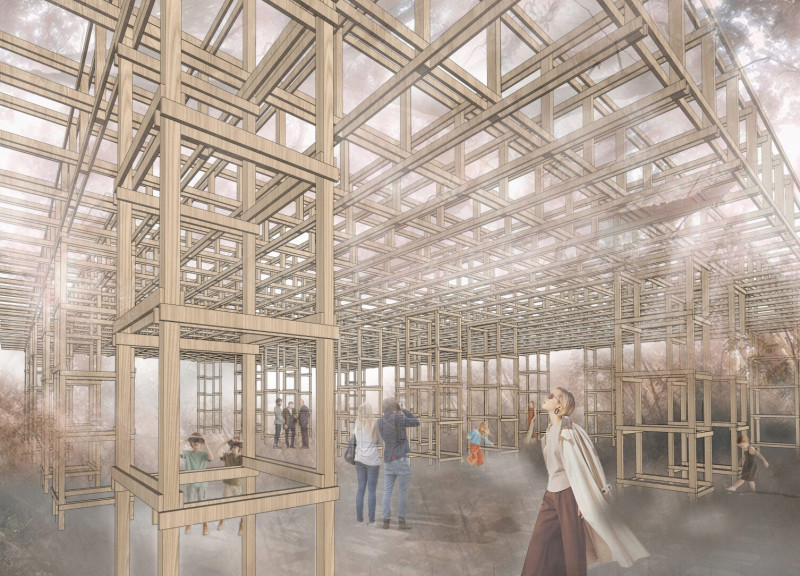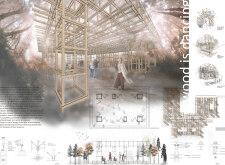5 key facts about this project
The Pavilion represents a thoughtful blend of traditional construction methods and modern design focused on creating public spaces. Located in an urban area often described as a concrete jungle, it serves as a venue for community engagement and social interaction. The aim is to establish an open area that encourages people to gather, play, and connect.
Modularity
The design uses a modular structure that allows for different configurations. This flexibility makes it possible to adapt the space according to various needs. Each arrangement underlines the idea of multiplicity found in nature, particularly in how trees grow. This kind of adaptability ensures that the Pavilion can serve diverse functions, from casual meetings to organized events.
Materiality
Wood is the main material used in the Pavilion's construction. This choice helps create a warm and inviting environment that resonates with users and complements the natural surroundings. The texture of wood also enhances the tactile experience people have within the space. By incorporating wood, the design fosters a connection with nature that feels both familiar and comforting.
Light and Ambiance
Natural light plays a significant role in the Pavilion’s design. It is carefully directed to fill the space, creating interesting patterns as it interacts with the wooden surfaces. This relationship between light and materials brings a lively quality to the interior. As the day progresses, the shifting light transforms the atmosphere, making the Pavilion a dynamic place for social interaction.
The design aims to reflect movement and energy, evoking the idea that "wood is dancing, wood is singing." Such expressions encapsulate the intention behind this vibrant space, inviting people to experience a deep connection with their surroundings. The Pavilion functions as more than just a structure; it is a community hub where relationships can flourish in a setting that feels alive.



















































